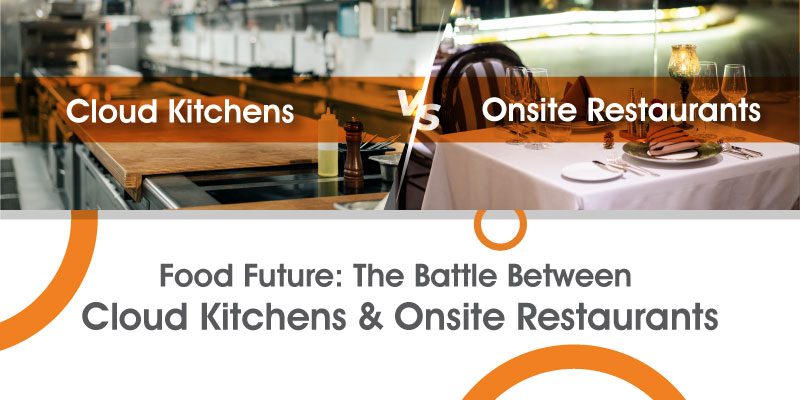The COVID-19 pandemic has changed the culinary industry as restaurants and pubs shut shop while cloud or ghost kitchens stepped in to take over sector space and offer quality food to consumers. But as a culinary entrepreneur, which one should you go for? Here are a few things to consider:
LOCATION
Cloud kitchens can exist anywhere. As a delivery-only service, they do not need physical visibility at all. Onsite restaurants, however, require sufficient footfalls to survive. Owners need to invest in ideal locations, often dealing with high rents and property costs. The perfect location that easily brings in customers will demand less in terms of marketing.
AMBIENCE
There is no need for ambience in a cloud kitchen; diners eat in the comfort of their own homes. These ventures cannot utilize aspects such as mood, lighting, décor, and even music to build customer expectation. Using all of these elements, an onsite restaurant can cover up slight delays in service time, encourage guests to stay longer, and order more.
STAFF
With ghost kitchens, only catering staff is needed. Delivery staff is important if you have not signed up with platforms such as Swiggy or Zomato. Cloud kitchens are certainly cost-effective compared to onsite ventures. Restaurants need trained wait staff well-versed in your menu who can be an asset. Waiters and maitre d’s help push profitable suggestions and can make the dining experience very pleasant.
COSTS
Kitchen setup costs can vary from one enterprise to another depending on what you’re going for. With multiple cuisines comes higher costs. Both types will need excellent HVAC (Heating Ventilation Air Conditioning) systems for safety and hygiene. Cloud kitchens can also be shared among two or more ventures for better savings while onsite restaurants offer chefs full control over the equipment.
VISIBILITY
Cloud kitchens are only visible online while restaurants profit from both – online and onsite. The former must team up with food delivery apps and are at their mercy. If they raise prices, profit margins for cloud kitchens drop. Restaurants can use the fact that they have an onsite location as leverage to bargain for better rates from delivery apps.
CUSTOMERS
Customers are not quite attached to cloud kitchens. Instead, their loyalty lies with the delivery apps. Without the ambiance, a delivery app is simply a huge menu with a variety of deals and discounts. Online, cloud kitchens are able to reach a wider network of customers. Restaurants, on the other hand, offer an emotional connection to their patrons, a space to make memories.
WHICH SHOULD YOU CHOOSE
The final decision between cloud kitchens and onsite restaurants depends on the experience you want to offer the customer and your budget. Trends suggest a boom in cloud kitchens, driven in part by the pandemic, but also by the far-reaching internet and the demand for convenience.
It doesn’t have to be an either-or situation. Culinary entrepreneurs can start off with a cloud kitchen and solidify brand awareness before moving to a brick-and-mortar restaurant.







Leave a Reply